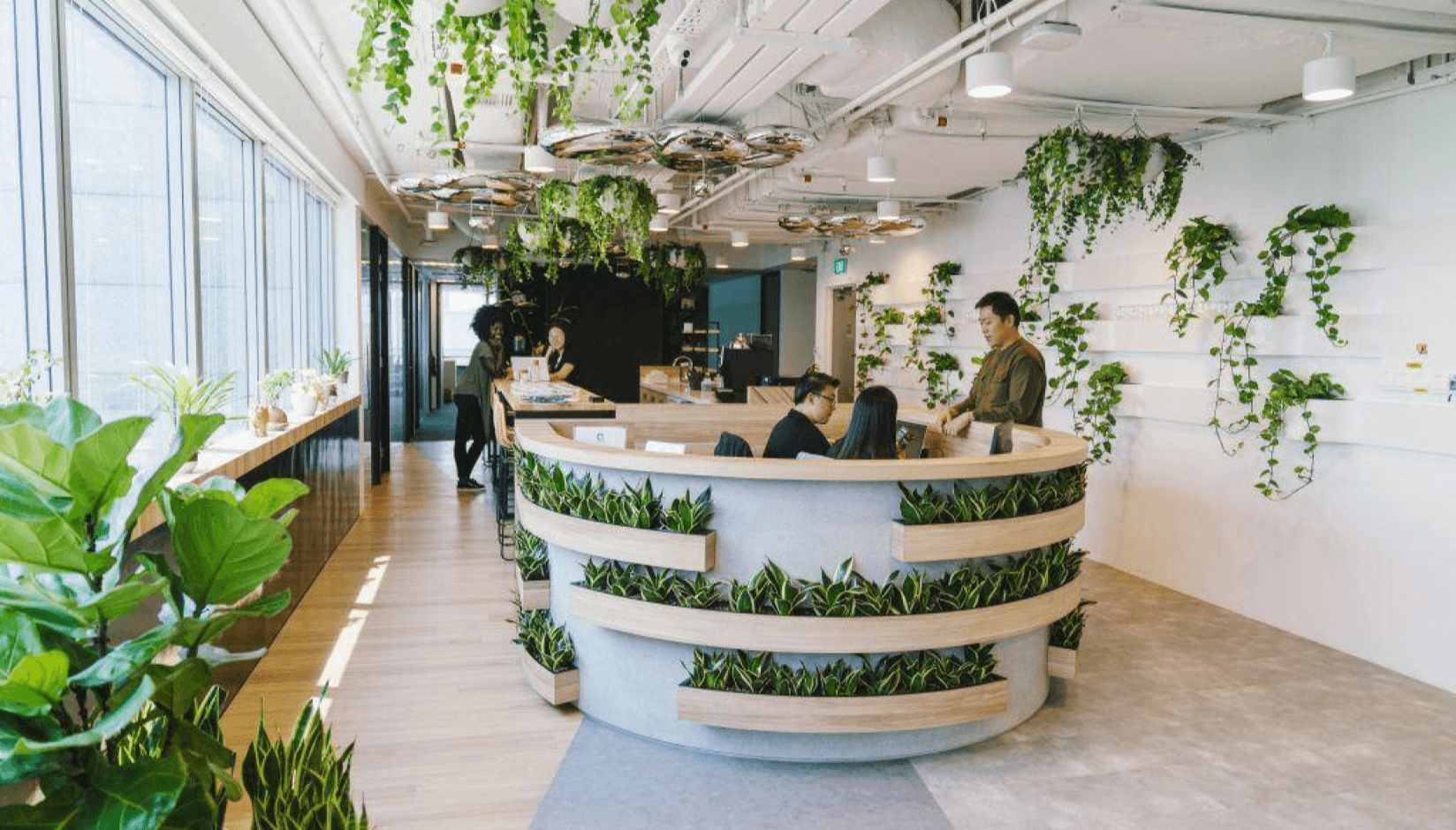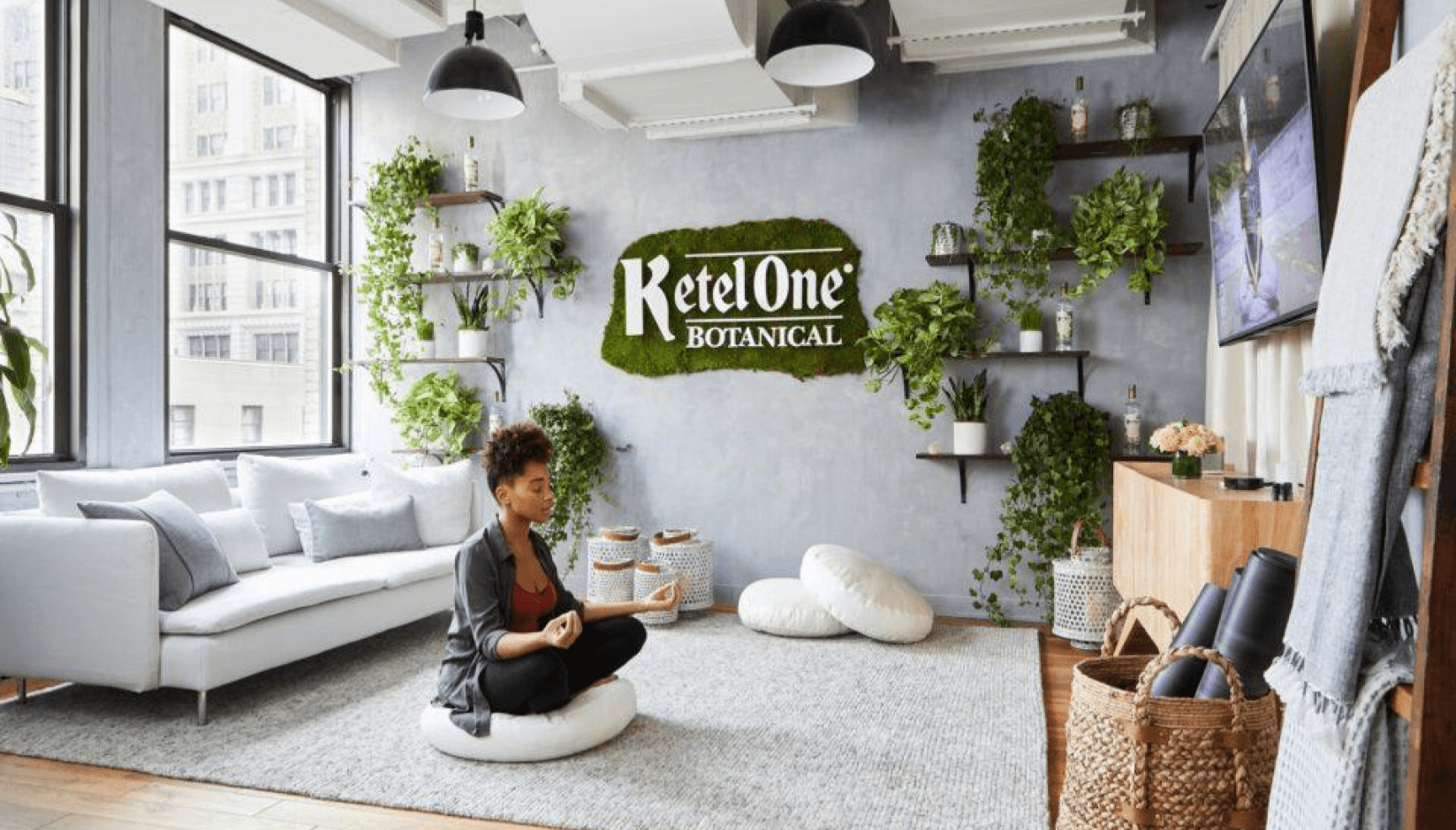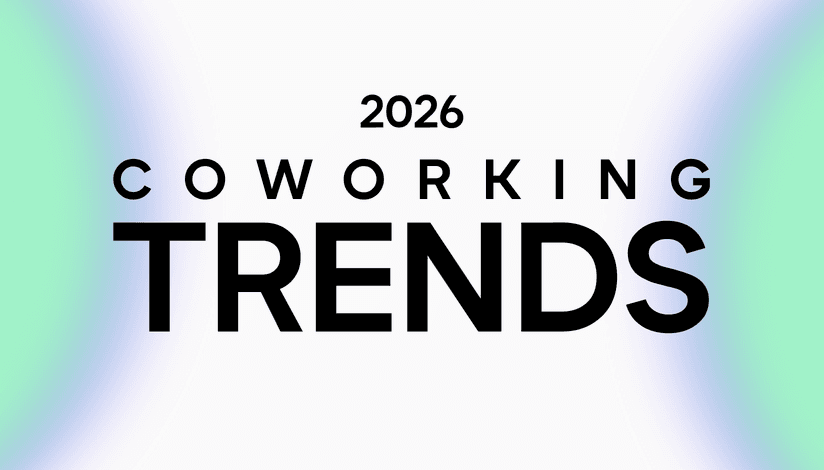Locking into a long-term office lease makes little sense when a team’s needs change every few months. So, more business leaders are asking: How do you stay flexible without losing connection and culture?
In this article, we will explore the evolution, the rise of flexible coworking spaces, and the risks of falling behind as the modern workforce redefines where and how work happens. You will see what is shifting, what is sticking, and what to watch out for.
By the end of your read, you will be ready to plan for the future without guessing, make smarter space decisions that grow with your business, and guarantee a flow of happy members.
The rise that won’t stop: why the coworking concept will thrive through 2030 & beyond
Once seen as a niche concept, coworking evolved into a global shift in how we use office space. From a San Francisco coworking space filled with remote workers to shared hubs supporting small businesses and independent work, the appeal lies in more than flexibility.
By 2030?
Coworking spaces will feel less like an alternative and more like the norm. Think vibrant hubs where like-minded individuals collaborate across industries, far removed from the isolation and rigidity of the traditional office. These spaces will offer community, flexibility, and purpose, all built for work, connection, growth, and well-being.
So, why will coworking keep booming through 2030? Here’s what is fueling the momentum:
- Workers crave community and connection, not just desks
- Big companies downsize from full offices to hybrid models
- Startups look for flexible space without long-term contracts
- Businesses want to save money as rental prices keep rising
For example, according to Dutton Gregory, 85.6% of business leaders in the UK expect commercial rent per square foot to go up, which makes coworking even more attractive.
2030 vision: coworking trends with staying power
Look for coworking trends you can test now, and see how the coworking movement gives you room to grow without overcommitting to outdated work models.
1. Design with purpose, reduce the impact
Shape your coworking space with intention. Choose layouts, materials, and systems that lower your environmental footprint without losing function or style.
Here’s an example from a coworking space in Singapore:

The reason this has staying power until 2030 and beyond? Sustainability is no longer a feel-good extra; it is a business expectation. As the coworking industry grows in major cities and attracts diverse professionals, people pay attention to how spaces treat the planet.
In fact, 55% of consumers say a brand’s environmental responsibility is very important when deciding whom to support.
How to adapt
- Choose local vendors to lower your carbon footprint.
- Run energy audits annually to spot waste and improve.
- Switch to LED lighting and smart sensors to cut energy use.
- Bring in more natural light and airflow to reduce reliance on A/C.
- Use reclaimed or recycled materials for desks, walls, and fixtures.
- Add greenery or vertical gardens to boost wellness and air quality.
Offer composting and better recycling stations in kitchens and lounges.
Amy King on how to start a sustainability journey as a coworking business owner
2. Let tech handle the busywork in your coworking hub
Up to 40% of businesses can disappear if they do not adopt new technology.
What does that mean for you?
Use smart tools to run your shared workspace more efficiently so you spend less time on admin and more time building real value for members.
Why will this trend stick around?
It removes the exact friction points that turn people off, like clunky bookings, delayed invoices, or not knowing who to ask for help. As flexible work arrangements become the norm and modern workspaces replace corner offices, members expect your space to run like a well-designed app:
- fast
- intuitive
- helpful
If they can reserve a meeting room in two clicks, get an invoice without emailing you, and chat with the community all in one place, they will not only stay, but they will advocate for you.
How to adapt
Use coworking space management software like Spacebring to manage desks, offices, and even parking spots.
In addition, Spacebring can streamline your invoicing and payments. You can also use it to automate membership renewals so you do not chase late payments or missed signups.
Here are more ways you can use the automation platform to make your space profitable:
- Access to a white-label portal and app to give members a seamless brand experience.
- Engage your community through the platform's events, feed, exclusive perks, and chats.
- Offer instant support with helpful guides, FAQs, and issue reporting in one place.
All these features are especially useful if your space attracts entrepreneurs or B2B clients, like this mannequin provider serving retail brands. For B2B businesses like this, time and precision matter. A high-tech setup gives them instant booking access, automated billing, and on-demand support.
They do not want to chase down someone for room availability or wait on paperwork; they want to move fast, impress clients, and stay focused on delivering results. Plus, with Spacebring’s community tools, they can easily network with fashion consultants, boutique owners, or other suppliers in your space, which turns everyday interactions into new business leads.
Schedule a personal demo to discover how Spacebring could benefit your shared space business
3. Build a space that recharges people, not just devices
Nearly 58% of workers are likely to deal with musculoskeletal issues, and uncomfortable desks and chairs are not going to help.
So, if you want to be the coworking space that companies invest in, design your coworking space to support both physical and mental health, not just productivity.
When people feel better, they work better, and they stay longer. This shift isn’t just about trendy wellness perks; companies want workspaces that reflect their values and care for their teams.
Here’s an example of a wellness space within a coworking office:

How to adapt
- Design quiet zones or relaxation rooms for mental reset.
- Create outdoor or sunlit work areas for vitamin D and focus.
- Offer healthy snacks and hydration stations throughout the space.
- Bring in plants or natural elements to reduce stress and improve air quality.
- Add ergonomic furniture and standing desk options to support physical comfort.
Host wellness workshops, yoga sessions, or mindfulness breaks during the week.
The ultimate guide to designing and utilizing an effective coworking space layout
4. Create, edit, repeat: spaces built for creative minds
Build a coworking space that helps your members through the full creative process, from brainstorming to content production to final edits.
How can creative coworking spaces have staying power?
The gig economy is filled with independent workers, like videographers, designers, podcasters, and writers, who need more than Wi-Fi and coffee. They need a niche offer that supports content creation without the high cost of a private studio.
In addition, as content becomes a core business tool across industries, companies will rely on creative freelancers, and those creatives will look for more coworking spaces that understand their process, not just their schedule.
Think of a makeup artist collaborating with a beauty content creator. More than a simple table, they need bright, natural lighting for tutorials, mirror setups for application, and a clean backdrop to shoot products, like this:

How to adapt
- Set up equipment rental options for cameras, mics, and lighting.
- Add photo/video-friendly lighting and backdrops in open areas.
- Offer high-speed upload internet, a must for video editors and streamers.
- Provide access to premium AI Video Editor and AI animation generator platforms through shared licenses or user accounts.
- Build podcast booths or soundproof recording rooms for audio creators.
- Give access to shared editing tools or design software via on-site workstations.
Lastly, create membership plans tailored to creatives’ flexible schedules and budgets. For example, offer a pay-per-project option for freelance designers who need intense workspace access during campaign weeks but not every month.
Another example is to provide a student creator plan for film or design students who need affordable access during school breaks or weekends to finish their portfolios.
5. Craft workflows through space that fuel shared success
Your space should naturally support how people move, work, and collaborate without forcing it. When layout and workflow go hand in hand, a real connection happens without effort.
Towards 2030 and beyond, collaboration will no longer be optional; it will be how businesses grow. From the very start of the history of coworking, people chose shared spaces for idea-sharing, energy, and community.
So if you own coworking spaces, you now compete with home offices, and your edge comes from providing flexible environments where coworking members can spark ideas, form partnerships, and bring projects to life.
How to adapt
- Place breakout areas near work zones to spark quick idea-sharing.
- Create themed work pods for industries that thrive on cross-collaboration.
- Add writable walls and brainstorming corners for spontaneous creativity.
- Set up shared resource zones (printers, tools, supplies) to encourage casual connections.
- Use open layouts with visual flow to make collaboration feel easy, not awkward.
More than a seat: the real value behind coworking spaces
Look at how your space already supports key coworking uses. Then ask: How can you elevate these strengths to lead the coworking sector heading into 2030?
1. Scriptwriting or storyboarding
Writers and creators need space to map ideas, explore structure, and build visual flow. Many use whiteboards, pin-up walls, or open tables to spread out scripts or sketch scene sequences.
That is why coworking providers who offer space to think visually instantly stand out. When your layout supports solo work and group idea sessions, you attract creatives who need to see the big picture, literally.
What it should look like by 2030
Install movable whiteboards and adjustable lighting. Plus, design creative layout zones where members can pitch ideas, test narratives, or even storyboard with collaborators. For coworking spaces looking to enhance their online presence and attract the right clientele, partnering with a company that specializes in SEO can significantly improve their digital visibility and drive more traffic.
Add flexible seating that shifts from solo focus to team huddles and wall space that doubles as an idea gallery. You can also host feedback circles, storyboard showcases, or storytelling sprints that integrate tools like an online image generator, turning your space into a hub for content creators.
2. Cross-training employees
Your coworking spaces can let teams out of routine, into fresh environments and away from office politics. With this, they focus, connect, and absorb new skills faster during cross-training.

What it should look like by 2030
Design your space like a live-action skills lab. Set up "role swap" stations where employees physically rotate between mock workstations.
For example, sales at the design table, ops at the customer service desk. With this, each team can walk through each other’s tools and challenges.
Want to go bold? Host “department hackathons” where mixed-role teams solve real internal problems in 90 minutes and then pitch their solution in your open lounge. It turns training into a shared experience and your coworking space into a learning engine.
3. Hosting brand activations
More brands use coworking spaces as launchpads to build real-time buzz in a space full of engaged professionals. When done right, your members become part of the experience.
For example, let’s say a health tech company selling mobile alert medical systems sets up a hands-on activation in your coworking space. Members try the device in real-life fall scenarios, test how fast it responds, and give honest feedback on the spot.
With this, your client and other members experience more than just a demo; it becomes a memorable interaction that builds awareness and real trust around the product.
What it should look like by 2030
Think like a brand strategist. Offer modular display zones, ambient lighting options, and sound setups that flex for anything from a product demo to an interactive art wall.
Additionally, offer digital signage members can book to build hype leading up to their activation. For example, a brand books your digital signage with a teaser like “Something calming is coming soon.” Members start guessing and sharing what is next.
You should create booking bundles with space and access to your member newsletter or event calendar to drive attendance. You can host a seasonal coworking conference, too where brands in your space pitch and run their activations.
With this, you become more than a backdrop; you become part of their go-to-market strategy.
4. In-person & live-streaming workshops
For creators, coaches, and team leads, your coworking space can be the sweet spot between visibility and connection. With your area, they can run workshops that feel local and global at the same time.

What it should look like by 2030
- Offer workshop packages with one-click booking that include space, streaming equipment, and a tech-check walkthrough.
- Encourage hosts to use your community feed to invite others and create buzz before the session.
- Add camera-ready zones with clean backdrops, flexible lighting, and built-in mics so members don’t have to drag in gear.
- Offer “co-host credits” that let 2 members collaborate on a session together to give them both more exposure and attendees more value.
Future-proofing gone wrong: avoid these 3 costly coworking missteps
Scan this list and identify one misstep your space might be making today. Then, choose the solutions that align with where you want to be by 2030.
1. Weak local SEO
If people cannot find your space online, it will not matter how beautiful your interiors are or how engaged your community feels. As search algorithms evolve, coworking spaces with outdated SEO strategies can slowly drop off local search results.
Here’s how to avoid this and get ready for 2030:
- Claim and fully optimize your Google Business Profile.
- Create location-specific landing pages. You can target searches like “coworking space in [your city]” with tailored content. If using AI to generate the content, make sure to humanize writing so it reads naturally and connects with your audience.
- Publish locally-relevant blog posts. Cover nearby events, member stories, or unique features of your space.
- Hire an SEO agency that specializes in local SEO because they can pinpoint ranking issues and get you back in front of the right people, like First Page, a trusted SEO agency in Queenstown.
The ultimate guide to coworking space marketing
2. Lacking staff presence or support
If your team is not engaged or easy to approach, it sends the message that your space runs on autopilot. Even the first coworking space succeeded because people felt seen, supported, and part of something bigger.
Without that human touch, your space becomes just another place with desks and Wi-Fi.
Here’s how to avoid this and get ready for 2030:
- Assign a dedicated community manager who welcomes new members and introduces them to others.
- Train your staff to be proactive, not reactive. Their small check-ins go a long way.
- Collect feedback monthly and act on it fast. Visible changes build trust and retention.
- Use your member portal for real-time support, but always follow up in person when possible.
3. No clear upgrade path
Even the first official coworking space was never meant to be a one-size-fits-all solution. When members outgrow your space and you have nothing more to offer, they leave and take their loyalty, referrals, and momentum with them. Future-proofing means thinking beyond the first booking.

Here’s how to avoid this and get ready for 2030:
- Create add-ons like storage, printing credits, or extra hours to meet scaling needs without forcing a plan change.
- Show members their next option early. Do not wait until they are already shopping around.
- Offer tiered membership levels, from flexible desks to private suites to team rooms, with perks that grow at each stage.
Conclusion
The evolution of coworking will not wait, and neither should you. Grab your team, look at the trends, and highlight the ones that solve the problems you are facing right now. Do you need stronger community engagement? Better space utilization? Start there.
Treat it like an experiment, not a commitment. The goal is not to do everything; it is to do the next right thing that keeps your space future-ready.
To help you prepare, use Spacebring to manage your coworking space faster. From invoicing and payment automation to managing rooms and parking spaces, you can improve the customer experience with just one platform. Book a demo now so you can put your business miles ahead by 2030.






